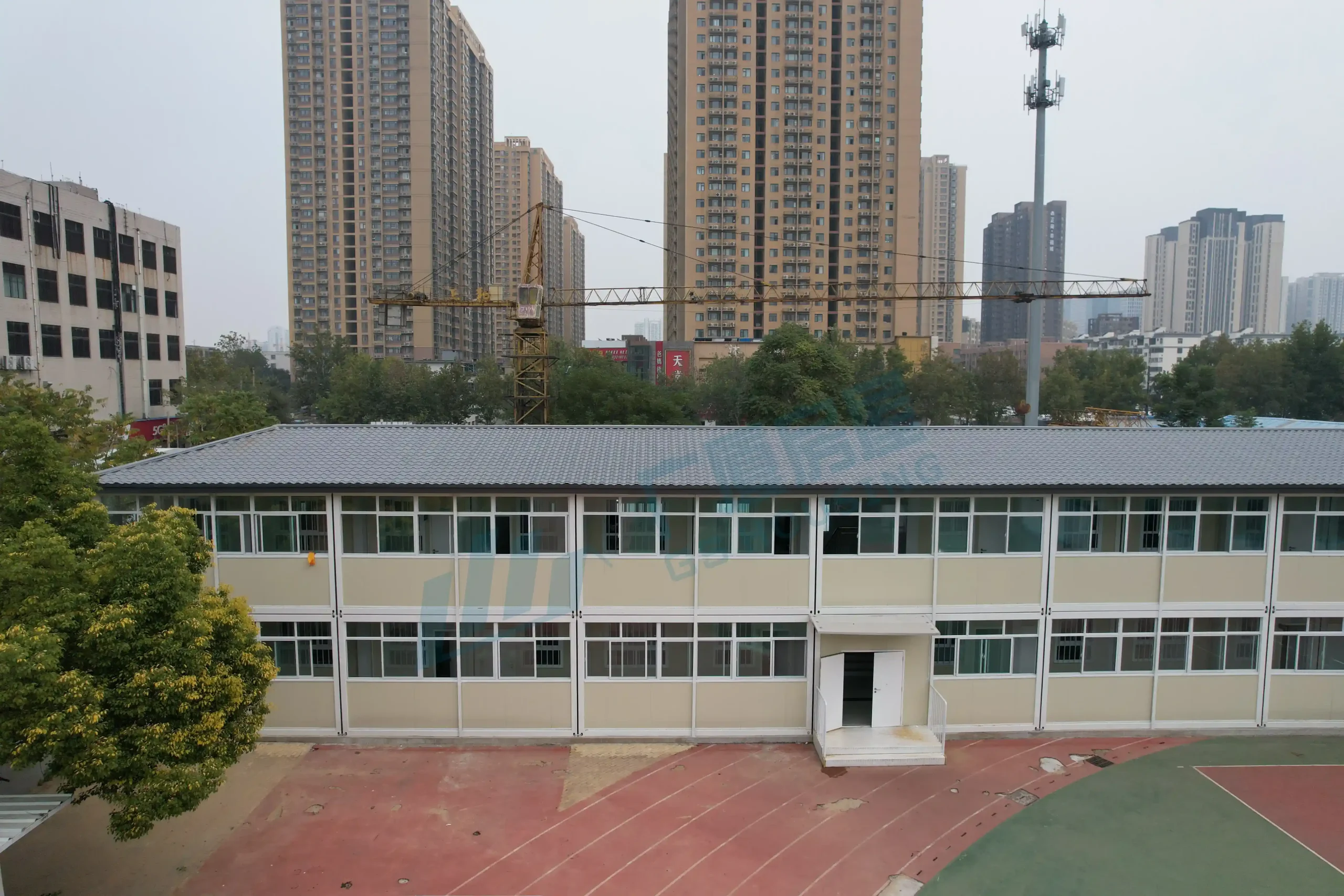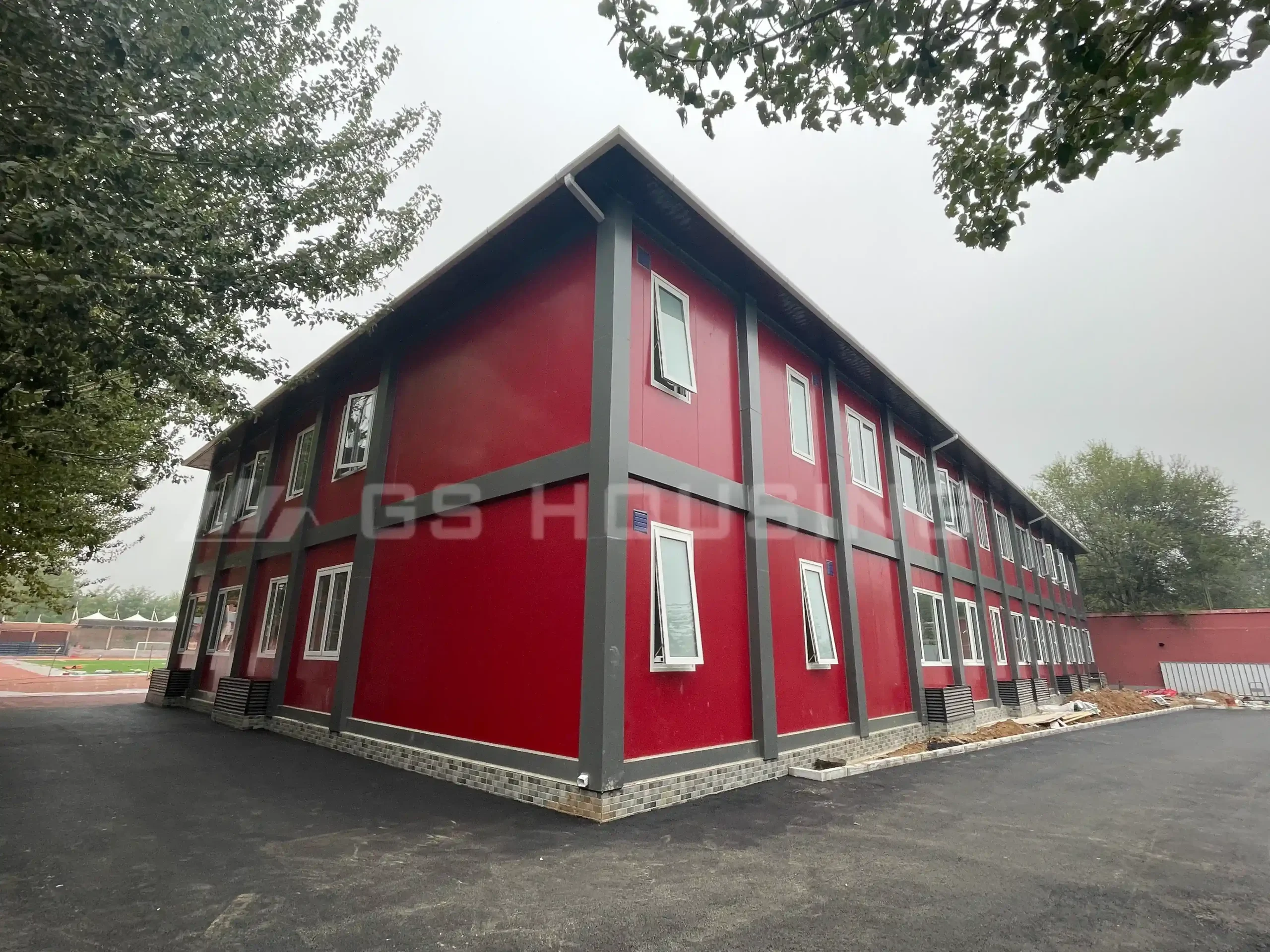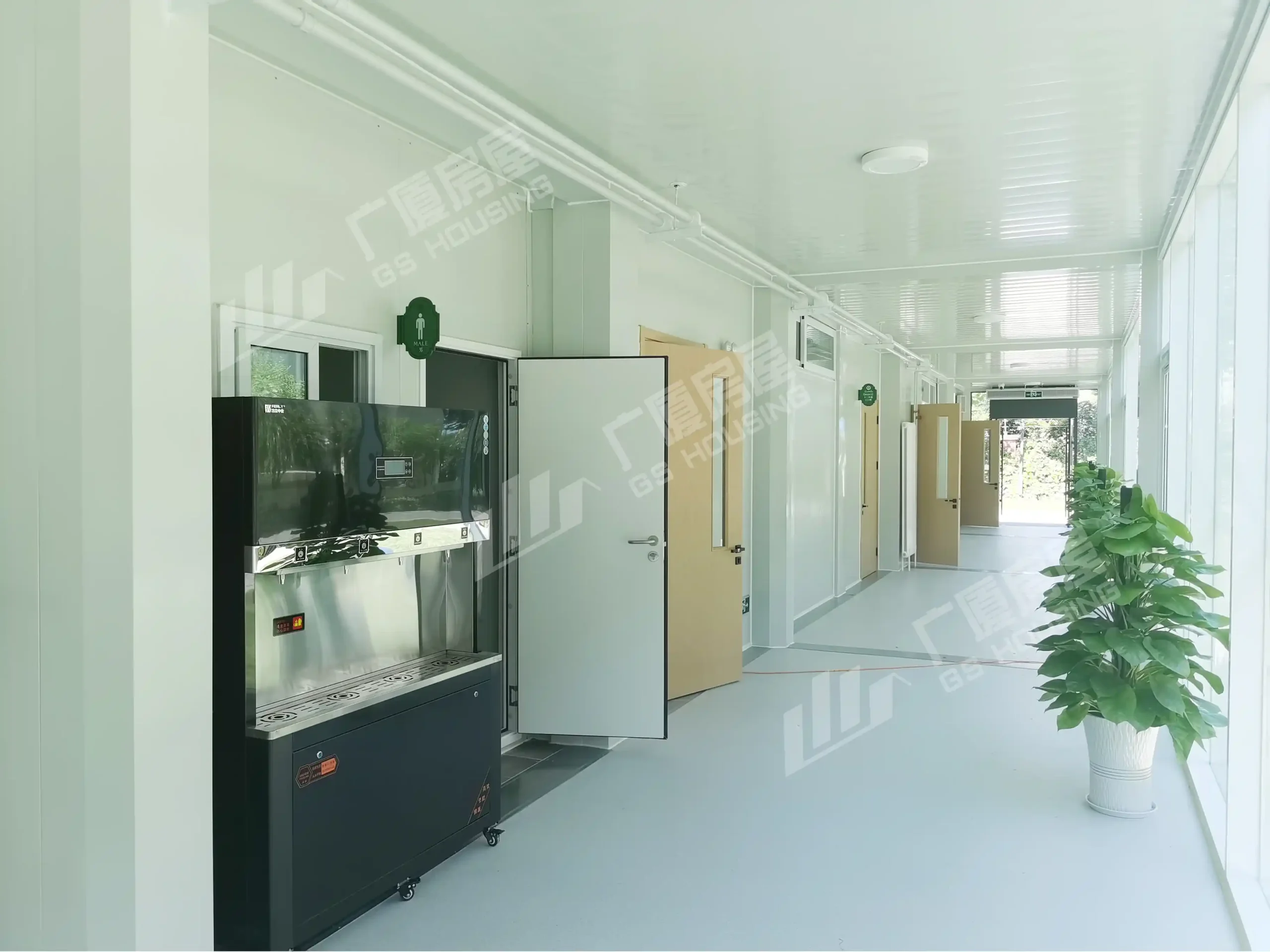How Modular Houses Help Schools Adapt to Changing Enrollment
How Modular Houses Help Schools Adapt to Changing Enrollment
Schools need infrastructure that can adapt as quickly as student numbers change. Modular housing offers a practical, fast, and sustainable way to keep education on track.

The High Cost of Inflexible School Infrastructure
Traditional school buildings weren’t designed with flexibility in mind. When numbers shift, the system struggles—leading to overcrowded classrooms, delays, and high costs.
Limited Classroom Capacity In Traditional Buildings
Conventional schools were designed for stability, not agility. Once a wing is built, it’s stuck. When a new residential area opens nearby, or families shift to urban zones, schools are left with either too many or too few classrooms. There’s no easy way to adjust without years of red tape.
Long Construction Timelines For Permanent Schools
Building a new block of classrooms the traditional way takes years. Design approvals, bidding, foundation works—it all drags on. In the meantime, students are often placed in temporary sheds that feel closer to storage rooms than learning spaces.
Rising Costs Of Expanding Education Facilities
Brick-and-mortar expansion is expensive. Costs climb with labor shortages and rising material prices. In fact, some local governments in China delayed school expansions because the budget couldn’t justify permanent facilities that might not even be used a decade later. The irony? Students paid the price, literally learning in hallways.
How Can Modular Houses Provide Flexible Classroom Solutions
Edifiços modulares give schools breathing space. They can be installed quickly, scaled up or down, and customized to meet different learning needs.
Rapid Deployment Of Prefabricated Units
One of the strongest arguments for modular classrooms is speed. A standard 40m² classroom can move from factory to on-site handover in just 3 days. Schools often plan the work during holidays, so when students return, there’s a new wing standing where an empty lot used to be. It feels a bit like magic—except it’s just smart engineering.
Scalable Structures That Expand Or Reduce Easily
Because units are modular, schools can add or remove sections as enrollment changes. Vertical stacking allows multi-storey classroom blocks without eating into sports fields. In Shenzhen, GS Housing delivered more than 100 modular units in weeks, letting a high school double capacity without sacrificing playground space.
Customizable Layouts To Fit Different School Needs
Not every classroom is the same. Some need heavy ventilation for chemistry labs, others require soundproofing for music. Modular layouts allow for this flexibility. Units can be designed as libraries, dormitories, even cafeterias—tailored to the specific needs of each campus.
What Benefits Do Modular Houses Bring To School Campuses
Beyond solving space problems, modular solutions bring long-term advantages—modern environments, lower environmental impact, and safe, durable structures for students and staff.
Improved Space Utilization And Modern Learning Environments
Modular schools don’t feel like “boxes.” They come with insulation, climate control, and natural lighting. Teachers often comment that modular classrooms are brighter and quieter than the older buildings on campus.
Sustainable Construction With Lower Waste And Energy Use
Because 70–80% of the work happens in the factory, construction waste drops by up to 70%. Steel frames are recyclable, and many projects now integrate solar panels and rainwater recycling to support low-carbon campus goals.

Enhanced Safety And Durability For Daily Education
GS Housing’s modular houses are tested to resist magnitude 8 earthquakes and typhoon-level winds of force 12. Walls use fireproof materials, and acoustic insulation is standard.
Why GS Housing is the Trusted Partner for Education Leaders
With two decades of experience and six large-scale factories, GS Housing has become a go-to partner for schools across China looking for reliable modular solutions.
Proven Track Record In School Projects Across China
Over the past 20 years, GS Housing has delivered hundreds of education projects—kindergartens in Hangzhou, middle schools in Hebei, expansions in Shenzhen. Each project proved that modular solutions can blend seamlessly with traditional campuses.
Factory-Produced Quality With Strict Standards
Com six factories across China and annual capacity of 200,000 units, GS Housing relies on automation and strict testing. Modules leave the factory with plumbing, wiring, and insulation already completed. The rework rate has dropped below 3%, a fraction of traditional on-site construction.
Turnkey Service Covering Design, Delivery, And Installation
From needs assessment to final installation, GS Housing handles the full process. No juggling contractors, no finger-pointing when things go wrong. The engineering teams are used to fast turnarounds: one Shenzhen project delivered 830 units in just 13 days.
How Do GS Housing Modular Houses Support Long-Term Education Growth
Modular classrooms aren’t just stopgaps. They integrate into smart campus plans, adapt to shifting enrollments, and balance quality with budget for years to come.
Adaptability For Future Enrollment Changes
Unlike permanent wings, modular blocks can be reconfigured or even relocated. This is particularly valuable for schools built on temporary land leases, where future moves are expected.
Integration With Sustainable And Smart Campus Designs
Modules can integrate solar panels, IoT monitoring, and even 5G networks. That means classrooms that adjust air quality automatically or dorms that track energy use in real time.
Cost-Effective Options Balancing Quality And Budget
By reducing build time by 30–50%, modular schools save significantly on financing and labor costs. That frees up money for what really matters: teachers, books, and programs.
Where Have Modular Houses Been Successfully Applied In Schools
From kindergartens to emergency relief schools, modular houses have already proven their value. Real projects across China show how adaptable they can be.
Kindergarten And Early Childhood Centers
In Hangzhou, modular kindergartens were completed within months, giving children safe and colorful spaces to learn.
Middle And High School Expansion Projects
Shenzhen’s No.14 Senior High School used 118 modular units to expand capacity rapidly. Students returned from break to find brand-new facilities.
Emergency Classrooms For Disaster Relief And Rapid Needs
After floods in Hunan and earthquakes in Sichuan, GS Housing delivered modular classrooms so education continued even when permanent schools were damaged.
How To Start A Modular House Project With GS Housing
Getting started is straightforward—consult, choose from proven solutions, and rely on GS Housing’s team for fast and seamless delivery.
Consultation And Needs Assessment With Experts
GS Housing begins with listening. School leaders outline challenges—space shortages, budget constraints, or time pressure—and engineers craft practical options.
Selection From Modular House Solutions Portfolio
From single classrooms to full dormitory complexes, schools can choose from a wide portfolio. Layouts are customizable down to window placement and furniture.

Seamless Delivery And Installation For Schools
Units are shipped flat-packed, assembled quickly, and often installed during term breaks to avoid disruption. In some cases, entire school wings have been completed in less than three weeks.
Ready to Transform Your Campus
Don’t let outdated construction methods hold your students back. Contact our experts today for a free, no-obligation consultation and project estimate.
FAQ
Q1: How long do modular classrooms last?
With proper maintenance, GS Housing’s modular units can serve for 20+ years. Many schools continue to use them permanently, not just as temporary solutions.
Q2: Are modular classrooms safe during earthquakes or storms?
Yes. They’re engineered to withstand magnitude 8 earthquakes and typhoon winds up to force 12. Materials are fireproof and weather-resistant.
Q3: Can modular classrooms be relocated if the school moves?
Absolutely. Modules can be dismantled, transported, and reassembled at a new site. This flexibility makes them especially valuable in fast-developing urban areas.



